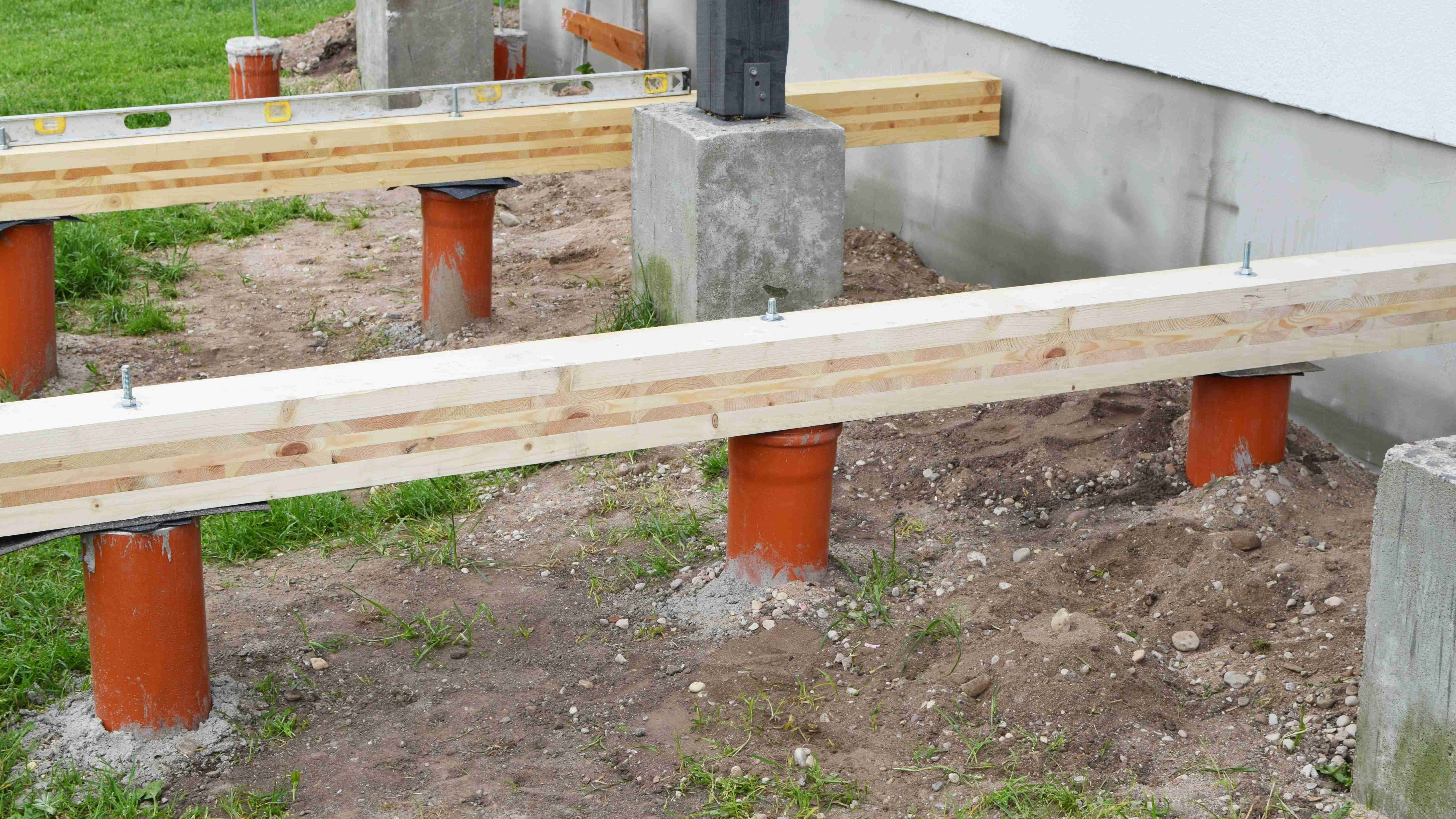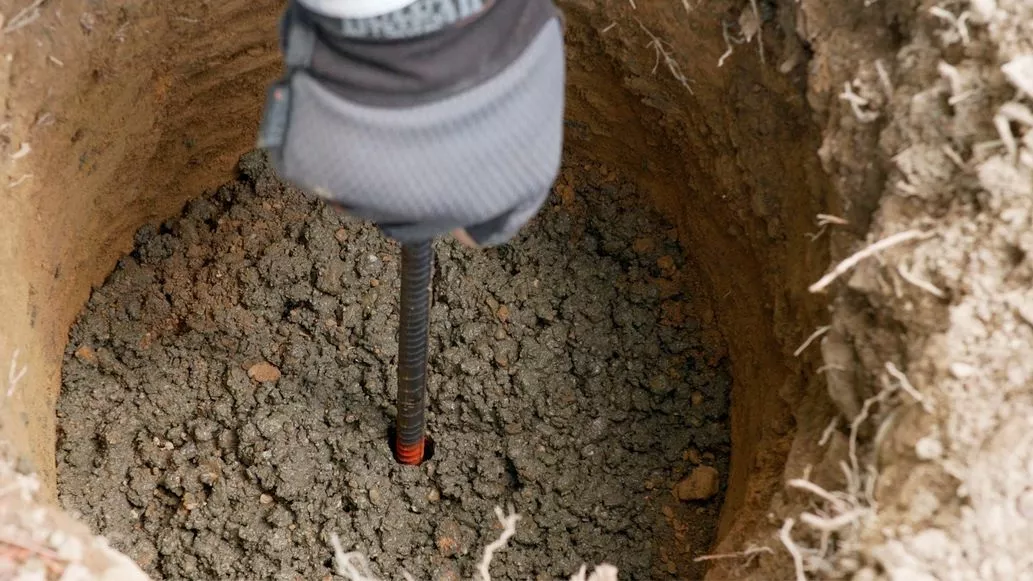Picking the Right Deck Footings for Security and Toughness
The long life and security of your deck depend greatly on the type of footings you pick, as they provide the necessary assistance and stability to withstand the test of time. In this conversation, we will check out the different types of deck footings, consider the essential variables to weigh when making a decision, and dig into the pros and disadvantages of various options.
Types of Deck Grounds
These footings consist of a cylindrical hole loaded with concrete, which gives a strong structure for the deck articles. Concrete pier grounds are reasonably easy to install and offer outstanding stability, making them a popular option for lots of deck jobs.
One more type of footing is the helical pile footing. Helical stacks are steel shafts with helical plates affixed to them. These footings are installed by screwing them right into the ground, which develops a secure foundation for the deck. Helical pile footings are optimal for locations with tough dirt problems, as they can be set up in practically any kind of dirt. If required., they likewise enable for easy change and progressing of the deck.
Additionally, some builders decide for precast concrete footings. These grounds are made from durable concrete and come in different sizes and shapes to accommodate various deck styles. Precast concrete grounds are practical to install and give a steady base for the deck framework.
Lastly, another alternative is the post-in-anchor ground system. This type of footing entails driving a metal anchor right into the ground and affixing it to the deck article. It provides versatility in terms of placing the deck posts and appropriates for decks with lightweight frameworks.
When choosing the best kind of deck footing, it is important to take into consideration elements such as dirt conditions, deck lots, and local building regulations (Deck Footings). Consulting with a specialist contractor or architectural engineer can help make sure the appropriate ground is chosen for a secure and stable deck
Aspects to Consider When Selecting Footings
When picking the suitable grounds for a deck, it is essential to meticulously consider different variables such as dirt conditions, deck load, and adherence to regional building ordinance. These aspects play a significant role in making sure the security and sturdiness of the deck framework.
Among the key factors to consider is the soil problems. The kind of soil on which the deck will be developed establishes the type of grounds needed. Decks developed on loose or sandy dirts might call for much deeper footings to offer sufficient support and avoid settling. On the other hand, decks built on clay or expansive dirts might need footings that can accommodate the dirt's propensity to increase and contract.
One more important variable is the deck lots. The weight of the deck, including the materials used and any kind of prospective online tons such as furniture or gatherings, must be taken right into account when choosing footings. The grounds need to be developed to bear the weight of the deck and distribute it evenly to stop any kind of structural issues or failings.
Last but not least, adherence to neighborhood structure codes is vital. Building regulations vary from area to region, and it is vital to adhere to the particular needs established by the local authorities. Deck Footings. These codes make sure that the deck is constructed securely and satisfies the essential about his criteria for architectural integrity and load-bearing ability
Concrete Grounds: Pros and Cons

Concrete footings supply several benefits and negative aspects when used as the structure for a deck. On the silver lining, concrete grounds provide superb stability and toughness. Concrete is a strong and inflexible product that can sustain hefty tons and stand up to numerous weather. It likewise has a lengthy life expectancy, making it a reliable selection for long-lasting usage.
An additional benefit of concrete footings is their convenience. They can be poured into different sizes and shapes to suit different deck styles and configurations. Concrete footings can be tailored to fit the particular needs and demands of the deck structure.
However, there are also some drawbacks to making use of concrete footings. This can increase the total price of the deck task and might need expert help.

Helical Piers Vs. Sonotubes: Which Is Better?
In considering the foundation choices for a deck, the comparison between helical piers and sonotubes is critical in determining the superior choice. Helical piers, also called screw piles, are steel shafts with helical plates affixed to them. They are twisted into the ground using hydraulic machinery, providing a resilient and stable foundation for the deck. On the various other hand, sonotubes are round kinds constructed from cardboard or fiber product that are loaded with concrete. They are placed in an opening dug right into the ground and give assistance for the deck.
When it concerns stability and durability, helical piers have the top hand. The helical plates on the piers produce a strong grasp with the dirt, moving or preventing any kind of motion of the deck. This is specifically useful in areas with unpredictable or moving dirt conditions. Sonotubes, on the various other hand, depend solely on the concrete loading for stability, which might not provide the same degree of strength and resistance.
In terms of installation, helical piers are fairly easier and faster to install contrasted to sonotubes. The hydraulic machinery made use of to twist the piers into the ground makes sure a effective and fast process. Sonotubes, on the various other hand, require digging openings and putting concrete, which can be labor-intensive and taxing.
Additionally, helical piers are a more flexible alternative. If needed, they can be used in different dirt problems and can be adjusted or reinforced. Sonotubes, on the various other hand, read this might call for additional support, such as rebar, in specific dirt problems or locations with high tons needs.
Selecting the Right Footings for Your Deck's Dimensions
For ideal architectural integrity, it is vital to very carefully select the ideal footings that align with the dimensions of your deck. The measurements of your deck, including its height, width, and size, play a significant role in determining the type and size of grounds called for.
When picking grounds for your deck, it is very important to consider the load-bearing ability of the dirt. The weight of the deck, integrated with the weight of any type of furniture or people on it, exerts a significant pressure on the grounds (Deck Footings). Consequently, it is crucial to pick grounds that can appropriately sustain this weight without moving or sinking in time.
The shapes and size of the grounds need to additionally be taken into consideration. Bigger decks with better measurements need larger footings to provide adequate security and assistance. The shape of the footings, whether they are round or square, depends upon the style and layout of the deck. In addition, the deepness at which the footings are mounted ought to be identified based upon the frost line in your area to stop any kind of heaving or moving as a result of freezing temperature levels.
Verdict
In verdict, choosing the ideal deck grounds is essential for making sure stability and sturdiness. Variables such as the type of footings, the deck's dimensions, and the pros and cons of various alternatives should be taken into consideration.
These footings are composed of a cylindrical hole filled up with concrete, which provides a solid structure for the deck blog posts. Concrete pier footings are relatively very easy to install and use superb security, making them a prominent option for numerous deck jobs.
Precast concrete grounds are description practical to set up and supply a secure base for the deck framework.
It supplies adaptability in terms of placing the deck articles and is ideal for decks with light-weight frameworks.
Concrete footings provide a number of advantages and drawbacks when used as the foundation for a deck.
 Luke Perry Then & Now!
Luke Perry Then & Now! Michael J. Fox Then & Now!
Michael J. Fox Then & Now! Danielle Fishel Then & Now!
Danielle Fishel Then & Now! James Van Der Beek Then & Now!
James Van Der Beek Then & Now! Naomi Grossman Then & Now!
Naomi Grossman Then & Now!